On the hunt for a great new pair of running shoes? If you have done any of your own research, you will notice that there are more options on the market than you may have realized. So, where do you start? Luckily, you’ve come to the right place! Here at ShoeGuide, we have put extensive time and effort into reviewing, researching, testing, and doing our own due diligence across a wide variety of shoes. This guide will give you all the information you need to pick from the best running shoes for men for every type of runner.
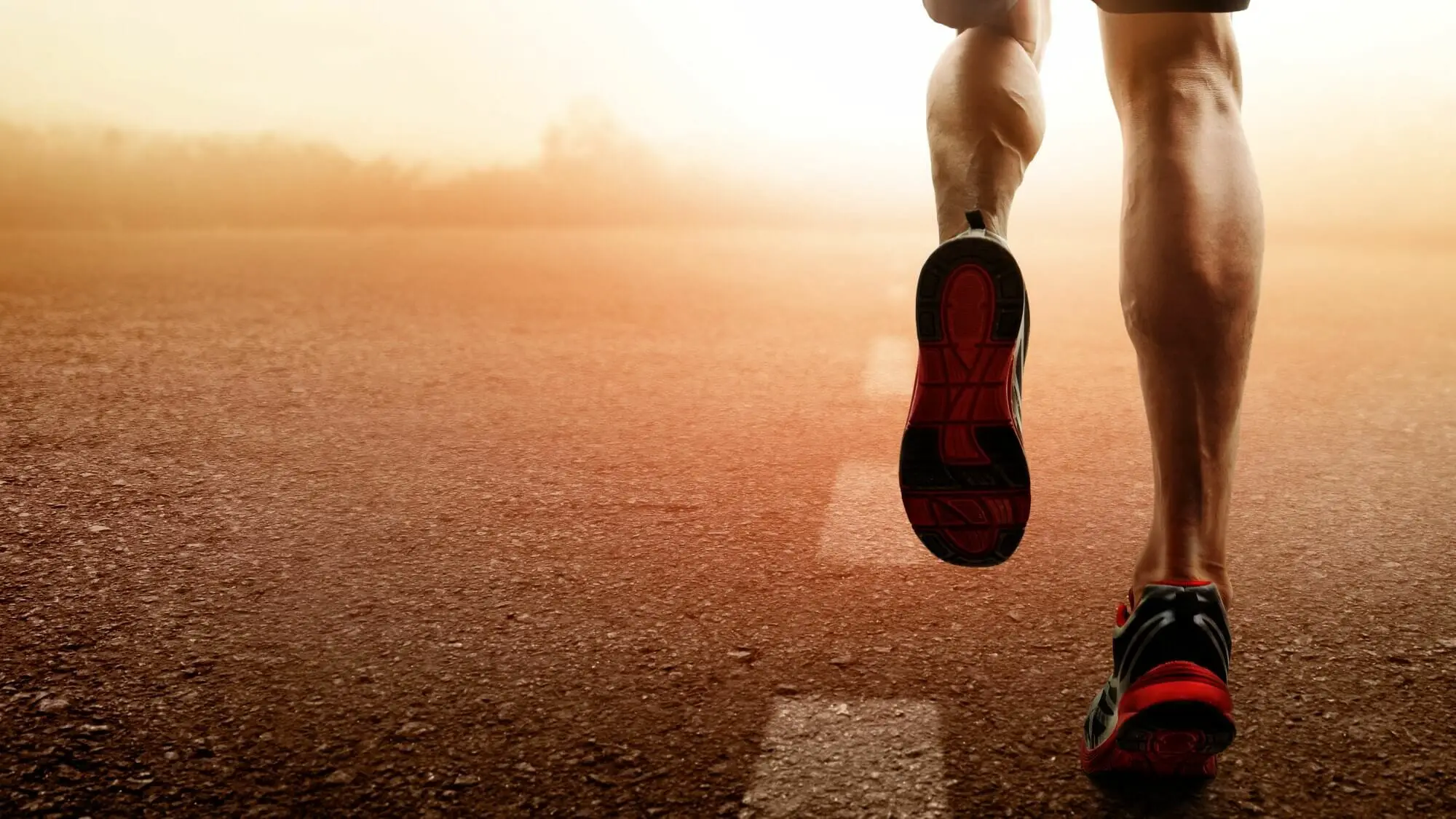
Our guide to the best running shoes for men dives deep into why these shoes are important, what our picks and suggestions are, and how you can go about making sure you choose the perfect running shoe for your individual needs.
Why Do Running Shoes Matter?
It doesn’t matter if your workout is strictly running, or includes some other types of training, having a decent pair of sports-focused shoes is critical. Injuries caused by running at any pace while not wearing running shoes are consistent. However, these injuries are also completely avoidable.Impractical footwear choices can detail your fitness journeys, and can cause permanent issues. As a result, making the investment in a high quality running shoe can assist you in preventing ankle and foot damage. It also services to provide a far more comfortable and pleasant overall experience.Do you take your running seriously? If so, you should definitely consider investing in a good quality pair of running shoes, developed specifically for the biomechanics and specifically for a running gait.
Our Picks for the Best Running Shoes for Men
First, we have developed a summary table showing what we consider to be the best men’s running shoes. Below the table you’ll find our quick summary of each shoe, along with links to our full blown reviews.
We did look at stability shoes for this article, but if you have more specialized needs, please check out our articles on Running Shoes for Flat Feet and on Running Shoes for Plantar Fasciitis!
- Best Distance Racing, Crazy Performance: Nike Vaporfly Next% 2
- Best for Everyday Running: Brooks Ghost 14
- Best for Everyday Use and Running: adidas UltraBoost 22
- Best for Beginning Runners: Nike Air Zoom Pegasus 38
- Best for 5k and 10k Road Racing: adidas Adios 6
- Best for Distance Road Racing: Hoka One One Carbon X2
- Best for Trail Running: Brooks Catamount
- Best Men’s Stability Shoe: Asics Gel-Kayano 28
- Best for Cushioning and Comfort: Hoka One One Clifton 8
- Best if You Love Saucony: Saucony Kinvara 12
How We Tested the Best Men’s Running Shoes
A strong pair of running shoes are equivalent to a fast car for fitness. They are surprisingly complicated pieces of machinery (in a way) that offer extremely high performance, but also have to last through the rigors of designated task loads.
There is quite a bit of behind the scenes work that goes on to manufacture a high quality running shoe. Extensive factors including durability, weight, cushioning, stability, breathability and more all go into the mix.
The running shoes that we have chosen for this list have a common thread: they all have high levels of comfort, while still being designed to cushion the feet, legs, and ankles substantially from the high-impact nature of running.
We examined extensive customer reviews, from both seasoned, veteran runners and those just getting into running. While doing this, we also used our own firsthand experience and the exclusive information we got directly from manufacturers to determine if they were delivering on their promises or not.
Additionally, we looked at shoes that were strongest for specific activities. This includes things such as competitive running, short distances, marathoning, sprinting, casual running, trail running and more. Overall, our goal was to provide a wide array of options, while hoping that we were able to hit all subsets of male runners in the process.
The Best Running Shoes for Men – Detailed Reviews
1. Nike Vaporfly Next% 2
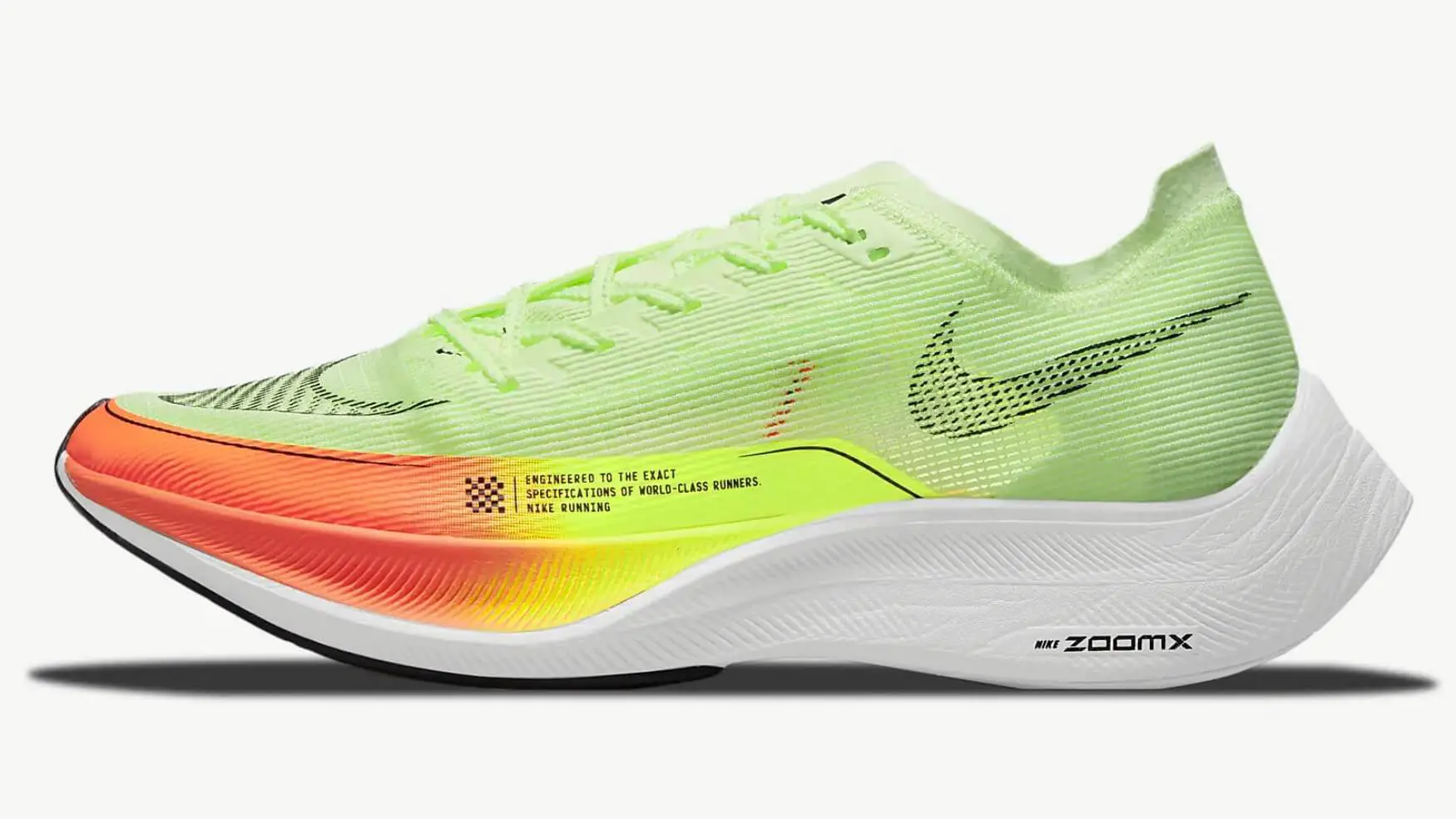
This is the ultimate running shoe, and tops our list for the best running shoes for men. The Nike ZoomX VaporFly Next% 2 is blisteringly fast. In fact, it is so fast that professional athletes are trying to get the shoe banned by the IAAF for providing an unfair advantage to those who wear them. Remember the guy who broke the two hour marathon? Yeah, he was wearing a version of the VaporFly Next%.
But what’s so great about this shoe? Nike tossed everything that they know about the running shoes game out the window when designing this VaporFly shoe. The result they ended up with may be one of the strangest looking running shoes on the market. However, it is the shoe that provides runners with dynamics that are just about perfect.
Three major elements set the Nike ZoomX VaporFly Next% 2 apart from other running shoes:
- Their updated ZoomX style foam provides an incredibly soft landing without energy being wasted on the ground.
- A full-length carbon fiber plate is embedded in the midsole, which lets you transfer landing energy straight into forward-focused momentum.
- Nike’s VaporWeave upper provides the enhancements that ensure your shoe fits perfectly on your feet.
If you are lucky enough to snag a pair of these, you aren’t going to want to wear them for small jogs in the park. These are meant to be strictly for races that truly matter. This cushioning, while incredible, is not going to perform at the level of efficiency expected forever. They are incredibly expensive, and almost impossible to find, so if you have a pair, we recommend only wearing a few times per year.
Advantages
- These are the ultimate running shoes for men. They are incredibly fast, and are sought after by many professional runners and athletes.
- The energy return and supreme levels of cushioning are second to none. They will provide an impressive advantage over the competition.
Potential Disadvantages
- These shoes are just about impossible to find, even now, months after their release. Much like a new pair of coveted Yeezy’s, they are collector’s items, although they actually get used.
- With the pricing of these running shoes, you are going to want to wrap them in silk in between races.
2. Brooks Ghost 14
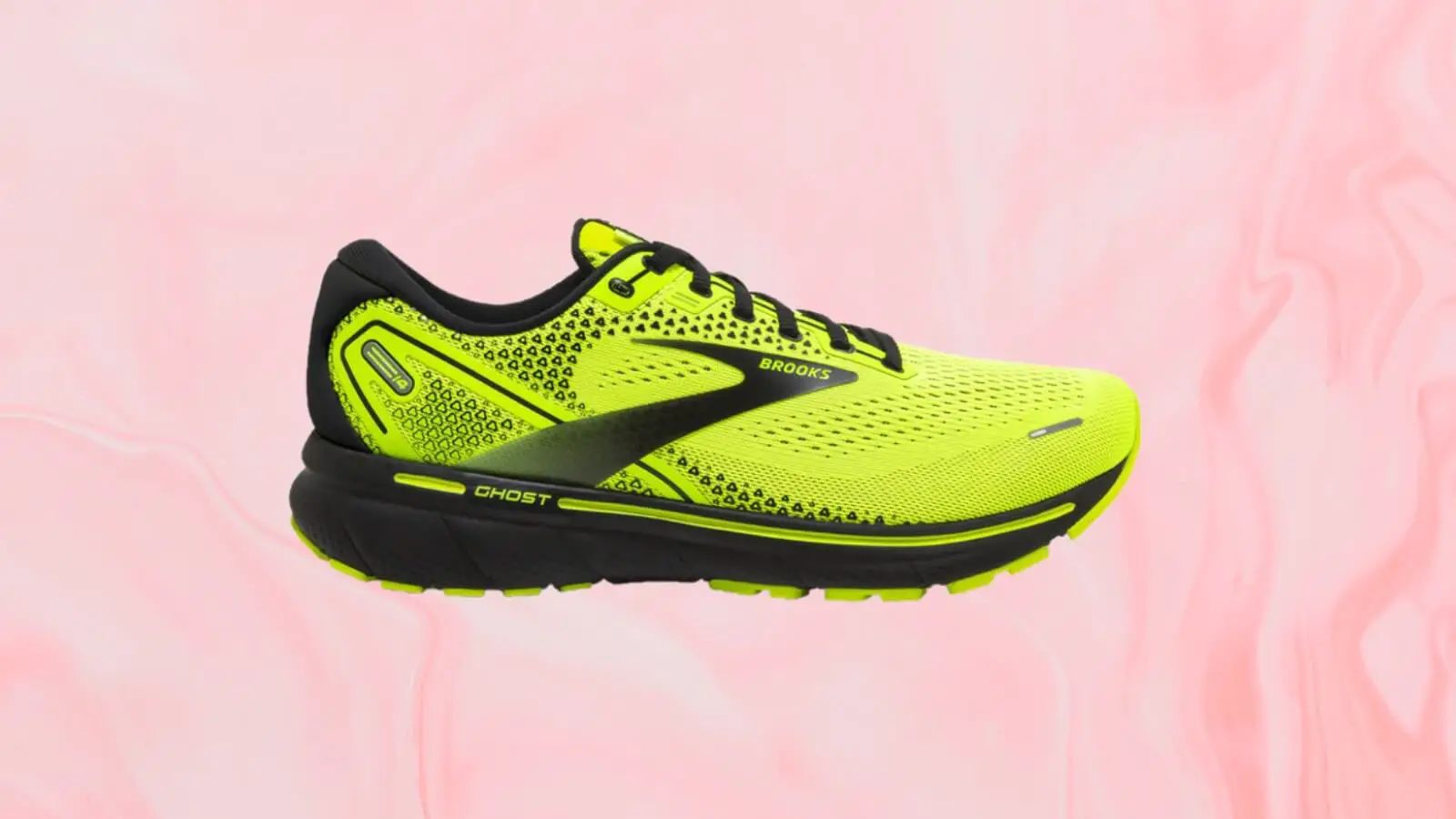
Brooks’ Ghost 14 for men is an incredibly popular running shoe for many reasons. One of the most common reasons for its popularity is its versatility, suitable for a wide range of runners. This is all accurate, as the Ghost 14 is an extremely versatile shoe, chock full of impressive features that provide benefits to all runners, regardless of track, trail, or road running.
Veteran runners and marathoners enjoy the stability and durability of the Brooke Ghost 14 compared to alternative running shoe options. Road racers appreciate the smooth ride and light weight when whizzing through a 10k or 5k. And less experienced runners like the high level of cushioning the Ghost 14 provides.
The Brooks Ghost 14 is among some of the strongest “neutral” running shoes. They have a great amount of cushioning, making them ideal for rougher races and longer trail runs. However, they are also responsive and light enough to speed up when chasing PR’s or competitors.
The 14 is the latest iteration of Brooks’ line of Ghost running shoes. Their mesh upper provides massively improved stretch levels and breathability. Additionally, the shoe has a plush collar and tongue, and the very soft fabric lining provides more enhanced levels of comfort, even with traditional lace-up closures.
Much like Brooks’ previous versions of their Ghost shoe, the 14 has impressive durability. It won’t cause discomfort or result in shoe breakdown, regardless of the length of your runs. This is one of the main reasons why this shoe ranks among the top tier of running shoes for long-distance enthusiasts. For more information we also have a complete review of the Brooks Ghost 14 with additional pictures, etc.
Advantages
- These shoes have extremely impressive levels of grip across the outsole.
- With a secure upper, the Ghost 14 flexes perfectly with foot movements.
- One of the most durable shoes on our list, many reviewers have noted these shoes push past 500 miles easily.
- The Brooks Ghost 14 has a very soft ride and supreme cushioning. They also have extremely comfortable fits right out of the box.
Disadvantages
- The Ghost 14 has a very high stack height (sole height due to increased cushioning). As such, they tend to be a bit more unstable on surfaces that are uneven when compared to alternatives.
- While durable and long-lasting, the initial price point of the Ghost 14 may be a turnoff for those on a budget when looking for the best running shoes for men.
- These shoes are known to be a little bit narrow through the toe.
3. adidas UltraBoost 22
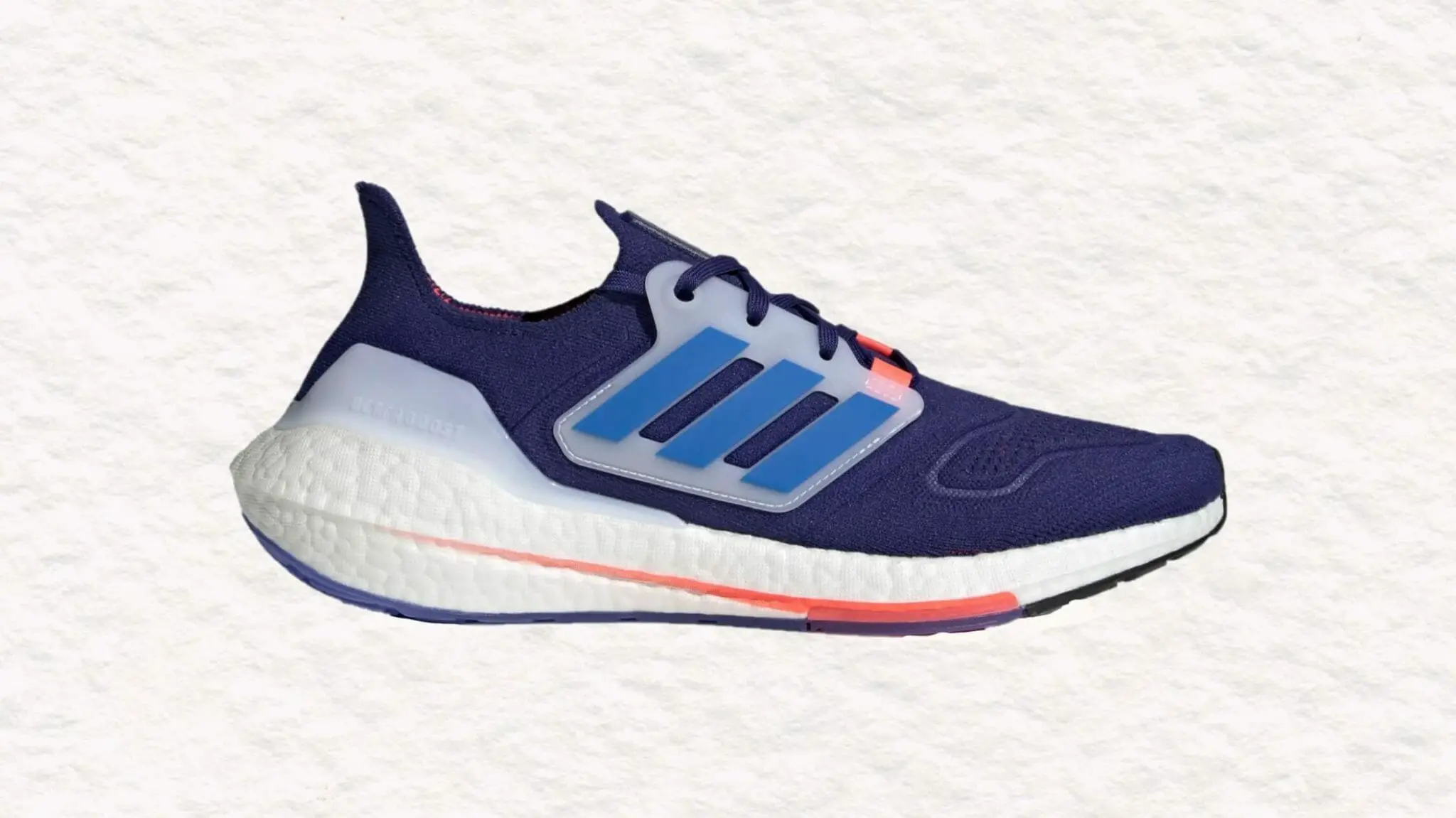
Adidas’ original UltraBoost running shoe was significantly far from being the perfect running shoe option. Luckily, as Adidas has progressed through their versions, they have incorporated new outsoles. This provides improved grip and durability in their newest version of their shoe, the UltraBoost 22. We have more details about the UltraBoost 22 in our complete review.
While it does have some downsides to this day, the Adidas UltraBoost is one of the best-selling running shoes for men at its price point. This new version of the UltraBoost comes with an impressively bouncy and cushioned ride, which ensures that any other noted imperfections are diminished.
Now, there should be no mistake that, if you are a performance runner, you will likely be better off (dollar for dollar) looking at an alternative shoe option. However, if you’re looking for a strong blend of functionality and style, look no further than the Adidas UltraBoost 22. These shoes have been adopted incessantly by casual-wear and streetwear consumers. Unfortunately, that has pushed up the price.
But this price increase has come with an increase in features. For example, the fit in the heel is far more comfortable. The forefoot has been expanded to have a bit more room, especially when compared to the UltraBoost OG. Additionally, they have included more of their “boost” cushioning throughout the midsole. Finally, the grip in the outsole has improved impressively.
And of course, the cage that Adidas lovers have long been complaining about have finally been replaced with far more pliable panels made of synthetic materials.
Advantages
- These shoes are incredibly comfortable and work wonderfully as a daily wear shoe. Their high-intensity midsole is like butter, leaving you not wanting for cushioning.
- Adidas’ Continental rubber outsole enhances durability, as well as traction control, perfect for longer distances or uneven surfaces.
- The upper of the Adidas UltraBoost 22 stretches taut over the foot, providing a conforming fit without pressure points acting up. Additionally, the wrap across the midfoot is softer, however it is prone to blocking natural ventilation, and can accumulate extensive dirt or sand in the pockets.
Disadvantages
- These shoes are a little bit heavier than most of the shoes in our list of the best running shoes for men. They weigh in at close to 11 ounces, most of which is in the lower part of the shoe. This means the capabilities of the shoes over longer distances or faster attempts are limited a bit. What does this mean for you? It will be far more difficult to log quick miles from the shoes. If you are hurting for faster times, choose a different shoe.
- The pricing for the Adidas UltraBoost 22 is priced quite a bit higher than alternatives of the same quality, and higher than expected for what they offer. At over $180, we are concerned that the pricing for the UltraBoost 22 comes mainly from their popularity as a shoe for style purposes, not running.
4. Nike Air Zoom Pegasus 38
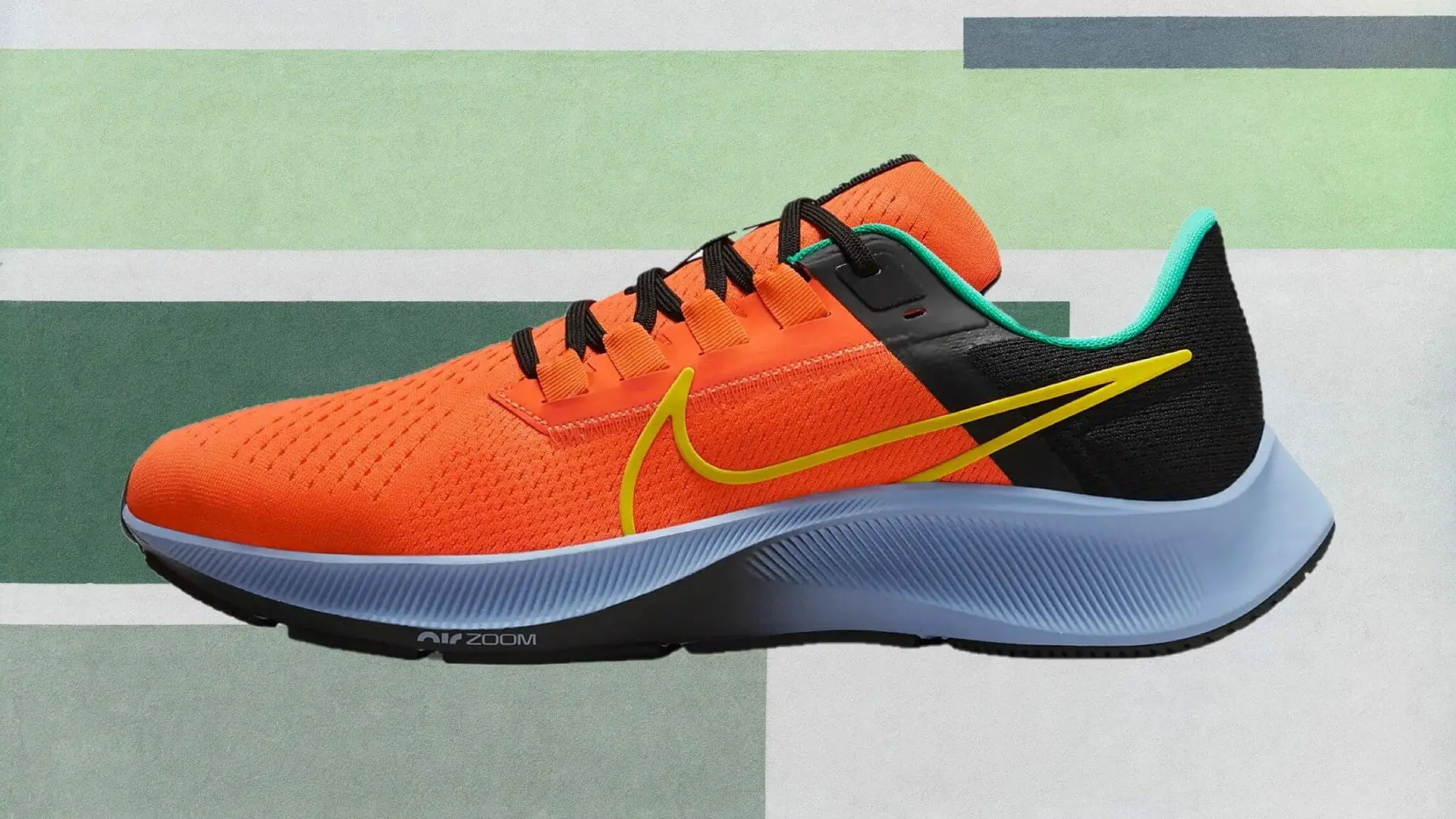
Nike’s Air Zoom Pegasus 38 is a somewhat simple running shoe for men. It was developed to please as many runners as possible while keeping the cost low. This running shoe has a neutral-height platform, offering a 10-millimeter offset. It also is nice and light, averaging a bit under 10 ounces for a size 10 men’s shoe.The midsole of the Air Zoom Pegasus 38 seems to be almost identical to the Pegasus 37, which came out last year. Additionally, the typical upper layout is close to identical. So, if you’ve already got the Pegasus 37 and are looking to upgrade, consider it like an iPhone, just wait for the next one.The most obvious change with the Nike Air Zoom Pegasus 38 in comparison to the prior model is found in the upper, close to the heel. Nike has thinned the tongue out a bit, while also making the fabric around the heel counter quite a bit sleeker, as well as minor changes being made to Nike’s Flywire attachment. The stripped-out crash pad is along the sole’s lateral side. This causes the running shoes to squeak extensively when on brick and tile.Its upper mesh doesn’t represent a tight, sock-style boot like many other running shoes, and isn’t a flexible, stretchable fabric like other Nike running shoes. Instead, it’s a simple, durable mesh upper. However, the internal structures of this mesh tend to become denser when in higher-stress areas of the shoes. This includes the top lacing area and the edge of the toe.
Advantages
- These running shoes for men feature a modernized and snug-fitting upper, making it perfect for running for people of all skill levels.
- The outsole has impressive coverage, providing thick yet light rubber all along the outsole for enhanced protection against the elements when running.
- Their upper is uncomplicated and simple, reducing friction points and the possibility for chafing.
Potential Disadvantages
- There haven’t been a ton of changes to this model of Nike Air Zoom Pegasus when compared to the previous version.
- When wearing, the fabric along the heel tends to fold around the heel in a very strange, sometimes uncomfortable way.
5. adidas Adios 6
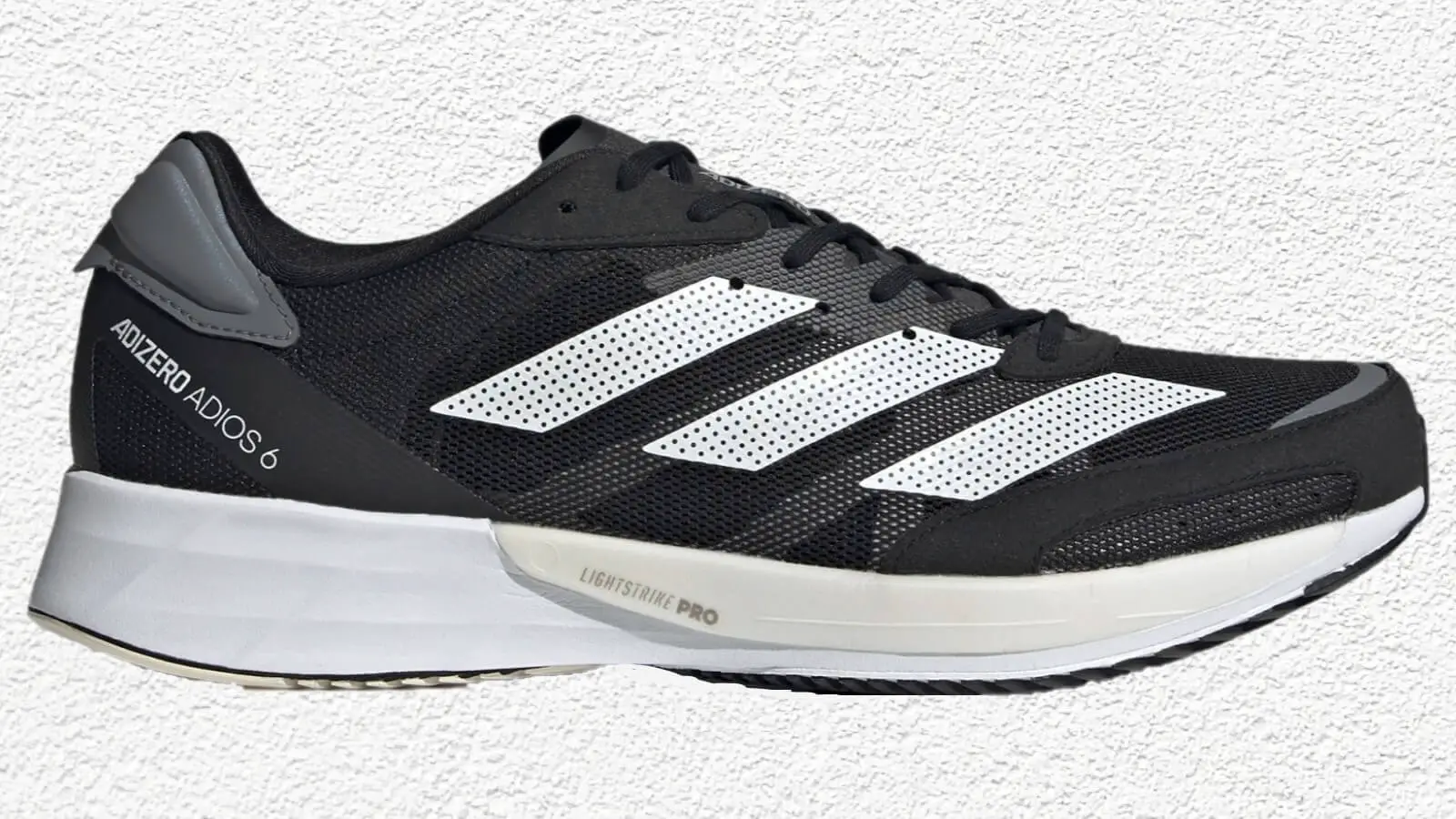
The adidas Adios 6 is far different than just about any other running shoe for men that is on our list. It was developed with one purpose and one purpose only: speed and agility. Adidas, who seems to focus on athleisure shoes and sport-specific shoes sometimes, come back with a truly unique running “flat”. This is one of the top flight-racing style shoes on the market, and is developed to compete with shoes such as the Nike ZoomX VaporFly Next% reviewed above.Yes, it may seem like a very bold push to re-enter the running shoe market by taking on some of the most technologically-advanced and expensive running shoes. However, with the Adios 6, they have succeeded in manufacturing a solid contender at a lower (although still quite high) price point.The first thing you will notice upon unboxing a pair of these running shoes is how incredibly light they are. They are, by far, the lightest shoes on our list, mostly because they are technically considered a running flat. But does this weight come at the detriment to comfort, stability, and durability? After all, a light shoe doesn’t mean anything if you feel like you are wearing two pieces of paper on your feet, right?Don’t worry, these shoes are legitimate. Compared to alternative racing flats, you will be surprised at the underfoot protection provided by the adidas Adios 6. In fact, the most amazing feature of these shoes are their foam, which is made from Pebax, an adidas-manufactured thermo-plastic polymer.Much like what Nike does in their racing flat above, Pebax is a blown foam. As a result, the weight is vastly diminished, is far more springy, and is far less liable to experience the compression you might expect with EVA foams found in lower quality lightweight running shoes. These shoes have the durability and fit of a racing flat. This means they should be worn for racing only, and you will experience a snug heel and midfoot, as well as a narrower forefoot.
Advantages
- These shoes have a tried and true racing fit, although they won’t feel too constricting when racing.
- If you’re a track-focused runner who isn’t a fan of the spikes common in sprinting shoes, these are a wonderful alternative option.
- The adidas Adios 6 has very lightweight cushions, which push the boundaries expected with racing shoe performance material.
- Their innovative outsole provides impressive traction, while also ensuring a lower weight.
Potential Disadvantages
- These shoes are incredibly expensive. However, their low weight, at 3.5 ounces per shoe, are focused on those looking for serious speed.
- If you’re a road racer, you might be turned off a bit by the three-millimeter drop, which most definitely keeps you on your toes.
6. Hoka One One Carbon X2
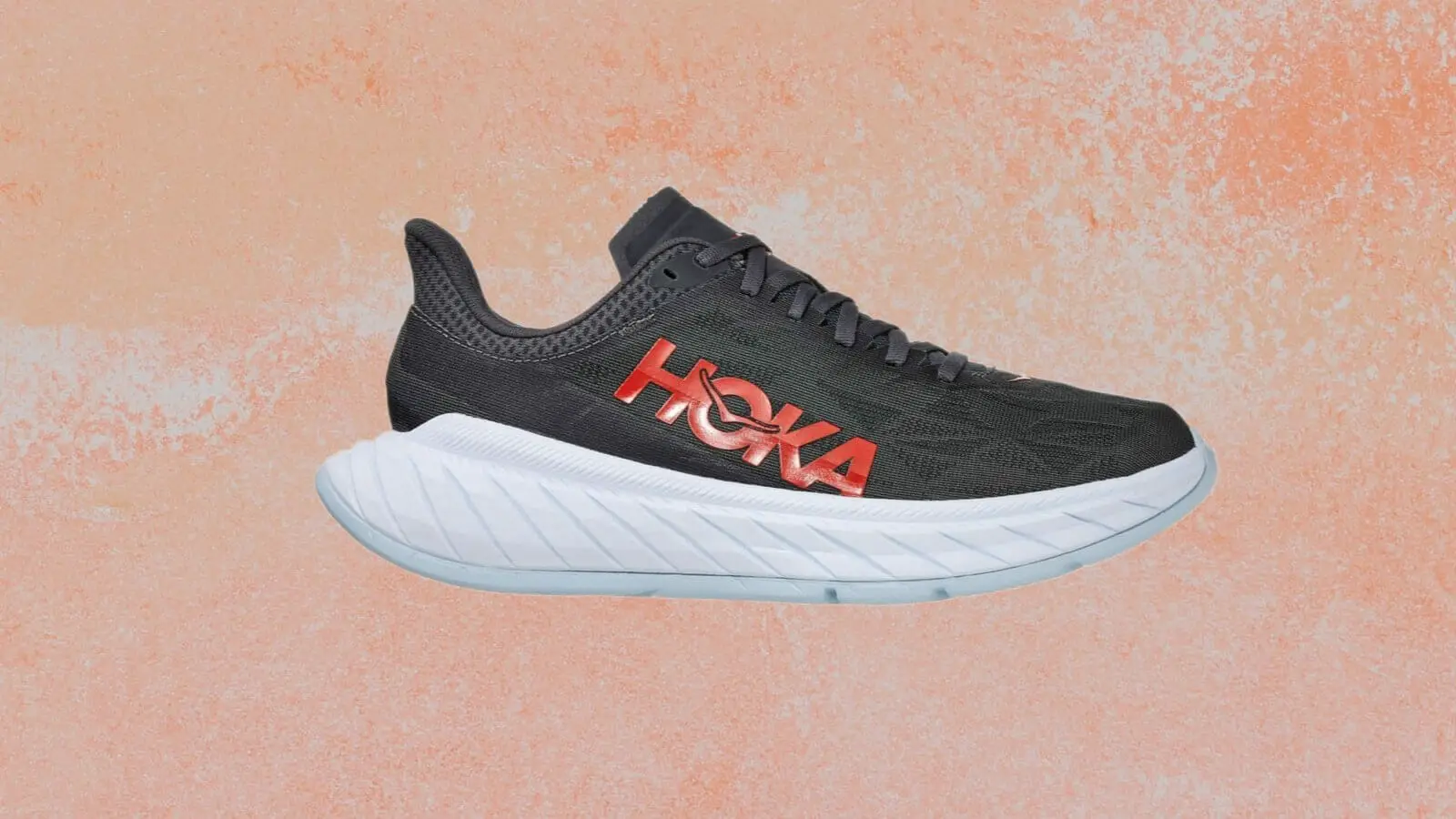
Hoka bills the Carbon X2 as an “endurance racer,” that gives runners an energetic ride with high responsiveness. The Carbon X2 is not like most other carbon-plated racing shoes you’re going to find. It has a firm midsole and wide base, and the carbon-plate is much closer to the ground than on competing models. This adds versatility to the shoe and while it’s designed for races, it could also work well for everyday runs for many runners. This versatility and performance is what got the Carbon X2 onto our list for the best running shoes for men.
Now that we have an entirely new category of running shoe: the carbon-plated racers, new variants that differ substantially from the initial concept were certain to emerge. The Carbon X2 from Hoka One One definitely differs from the competition.
It does not have the “bounciness” you’d expect from a carbon plate. After all, that bounciness is what launched this entire category of shoe.
Rather than focusing on revving up the bounce-factor, Hoka has taken carbon technology for running shoes in a different direction. This direction focuses on using the carbon to improve the transition in the gait cycle. While the Carbon X2 lacks the springiness of the Nike Vaporfly, it makes up for it with a stiff layer in the outsole.
The Hoka Carbon X2 vs. the Carbon X1
The biggest change you’ll notice between the Hoka One One Carbon X2 and Carbon X1 is the change in ratio between the upper midsole (the softer part) and the lower midsole (the firmer part). The soft, upper midsole is almost twice the size on the X2 vs. the X1. As you’d expect, this gives the shoe an overall softer ride.
Overall, this leads to improved comfort without sacrificing much in the way of performance.
The Carbon X2 also gets an updated upper with several improvements. The stiff heel collar found on the X1 gets replaced with a much more distance-friendly soft Achilles collar that will appeal to almost everyone who is putting in distance runs in the X2.
There are also a few updates to the tongue that are difficult to notice, and some additional reflective material around the upper.
Advantages
- Improved heel fit. The upgrade on the collar from the X1 provides better fit at the heel.
- Spacious toe box.
- Secure fit on the upper.
- Wide set, stable cushioning at the heel. Provides a solid base and cushioning for comfort on long-distance runs.
- Quick transitions. As discussed above, Hoke uses a lower-set carbon plate in the X2 (compared to, say, the Vaporfly) which reduces springiness, but allows for great transitions.
Disadvantages
- Lack of wide sizes.
- Price-to-value. It comes with a very premium price, but lacks the durability you might want.
- Outsole grip. Little in the way of tread or grip for slick surfaces.
7. Asics Gel-Kayano 28
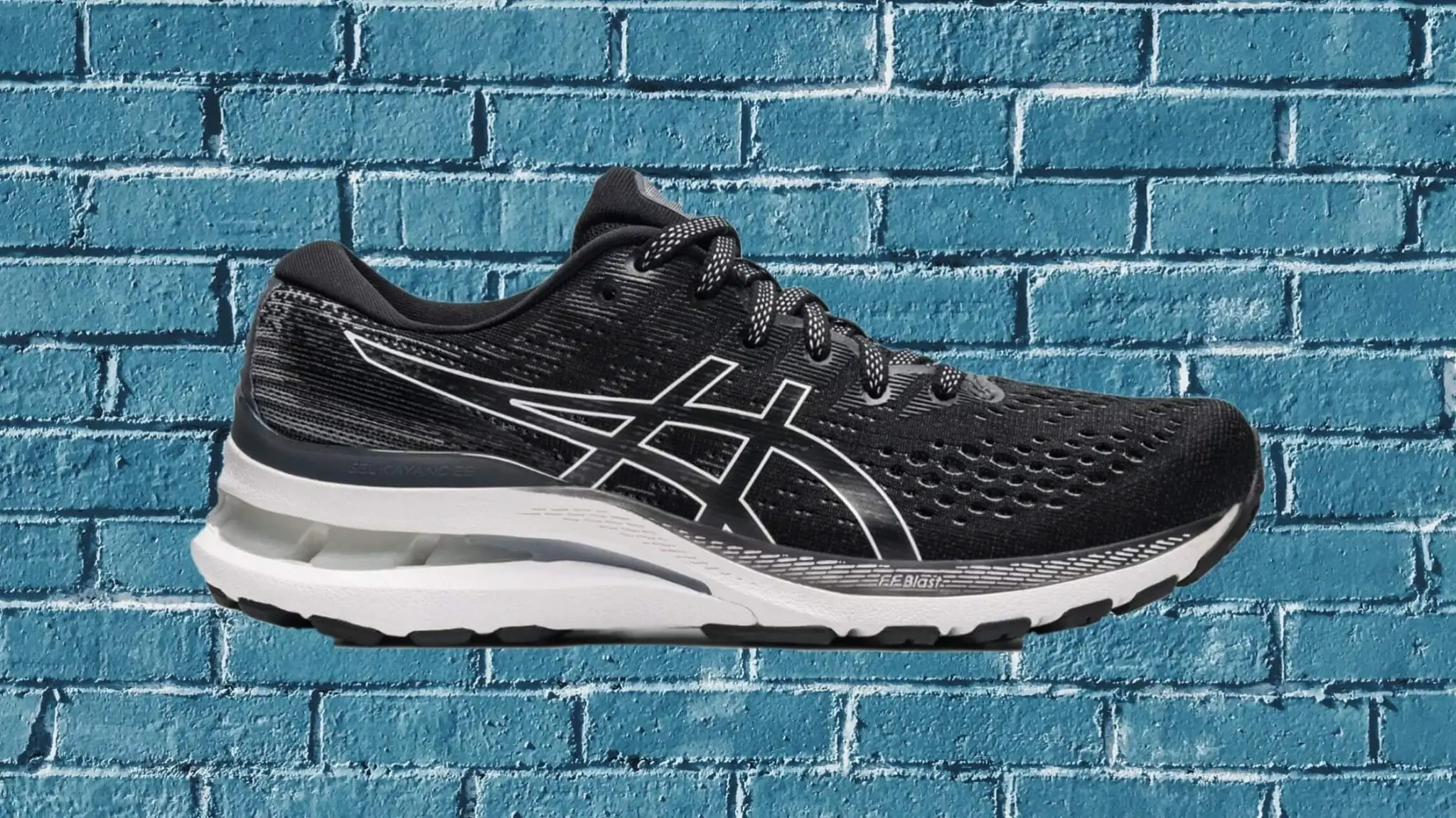
Running has never been an activity for those faint of heart. It requires extensive determination to stick with programs. Additionally, running causes extensive stress on all parts of the body, especially the legs, ankles, and feet.Aches and pains are all part of the process. This includes consistent knee pain, one of the worst and most common. Knee pains can easily bench you for multiple days, or force you to stop mid-run.This is why it’s crucial to pick shoes that protect the entire body, providing extensive stability across all surfaces and more. The Asics Gel-Kayano 28 provides this. It allows for a ton of protection from some of the more serious effects of running. Not only are they the best shoes for enhanced stability, but also for knee pain alleviation.While there are plenty of shoes on our list of the best running shoes for men that provide support, protection, and stability via additional foam or cushioning, the Kayano 28 is a little bit different. Asics puts the focus on the gait of the runner with these shoes. This is done with the Impact Guidance System present in these running shoes. This consists of fluid-filled gel capsules that work to maintain natural alignment of a runner’s stride. In turn, this allows the foot to adjust to any surface quickly and effectively.In addition to the above, The Asics Gel-Kayano 28 comes with FluidRide midsoles, which provide a far lighter weight while still retaining sufficient durability and cushioning. The upper of these shoes is made from a breathable stretchy mesh, adapting to the foot while also providing a fit that is perfectly between loose and snug.Finally, the rubber sole of these shoes provides impressive traction, while also ensuring strong support across a wide variety of running surfaces.
Advantages
- These shoes provide impressive levels of protection by putting the focus on the gait of a runner, versus overall comfort levels.
- While the midsole is incredibly durable, it doesn’t do so at the expense of added weight in the shoe. They remain light and durable, which is an uncommon combination.
- For runners who suffer with knee pain through a run, the high levels of stability help alleviate and diminish associated pain.
Potential Disadvantages
- Some runners have noted that the sizing of the Asics Gel-Kayano 28 tends to be erratic. We recommend buying a pair and trying them out for a little while before committing. If they are too tight, size up, if they are too loose, size down.
8. Saucony Kinvara 12
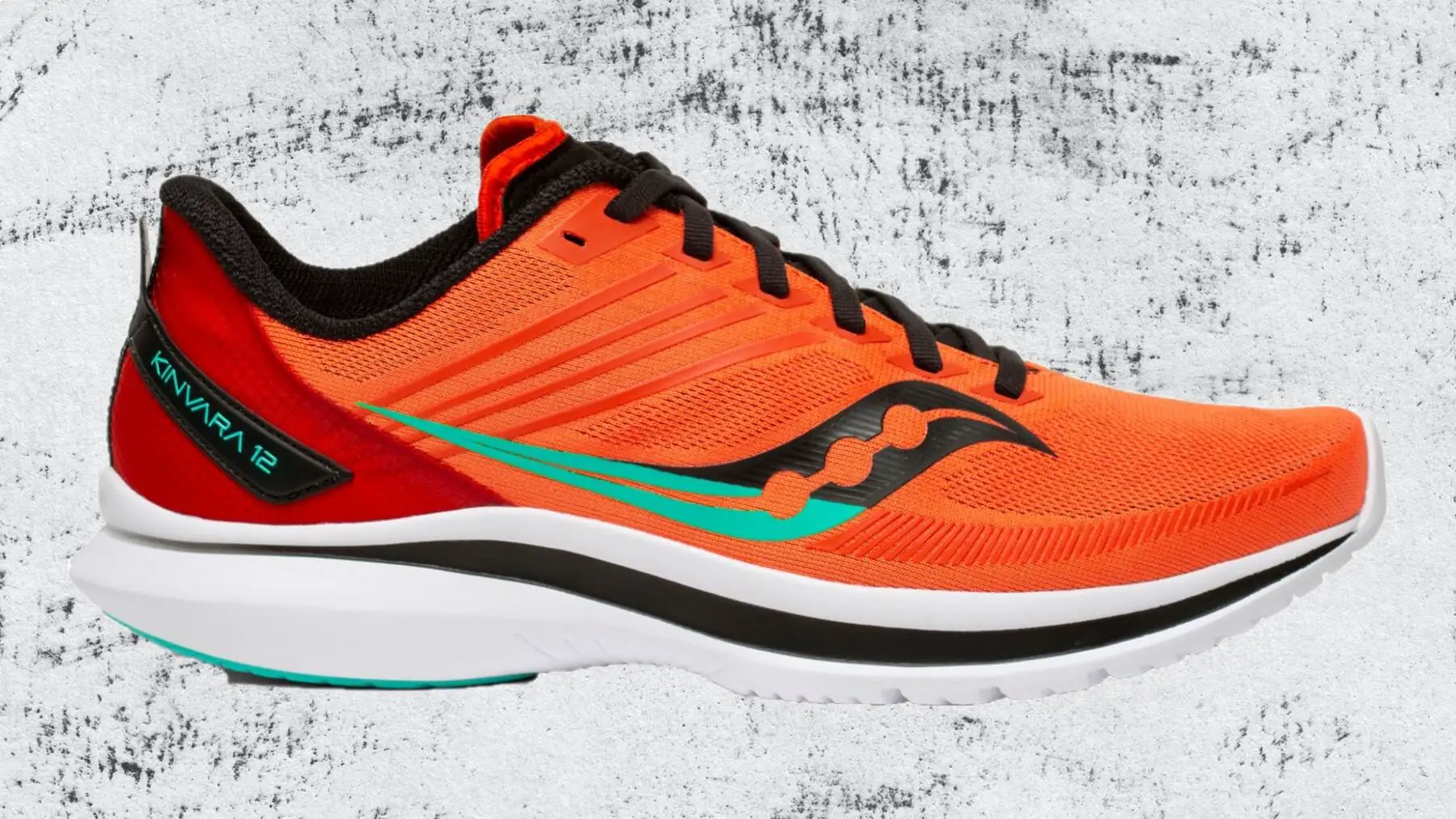
Saucony’s Kinvara 12 is a relatively new running shoe to the scene, the successor to the popular Kinvara 11. The Saucony Kinvara 12 doesn’t feel that much different from the 11, and remained relatively unchanged. I guess they realize that there is no need to fix something that is working great in the first place!The strong responsiveness and soft ride have remained the same, but with added, thicker midsole foam and high-level details in the uppers, the level of support has been greatly improved. The Saucony Kinvara 12 is strict to its sizing, providing a comfortable yet snug fit all along the midfoot. They also have a far lower heel-to-toe offset compared to most other running shoes on our list, at 4 millimeters.The Kinvara 12 is also a minimalist’s dream. The functionality of the shoe is incredibly streamlined, setting this in stone as a true running performance shoe. The upper is soft and seamless, comfortably hugging the foot with each stride. Additionally, a lack of extensive printed overlays and stitching, as well as specially-engineered woven mesh, ensures the upper is comfortable and snug against the foot, moving very naturally with each stride.Overall, Saucony enthusiasts consider this a successful shoe, and continue enjoying the light, responsive ride that the Kinvara 12 provides, even with its successor on the market. It is the ideal shoe for everything from daily runs to marathoning.
Advantages
- These shoes are extremely lightweight, some of the lightest running shoes for men on our list.
- They are the ideal blend of responsiveness and cushioning, as well as remaining incredibly versatile for a wide range of running-based activities.
- The transition with these shoes from heel to toe is smooth and flawless, ensuring your stride remains steady and unbroken during a run.
Potential Disadvantages
- Some have reported that these shoes have a tendency to lose traction when running on wet surfaces that were somewhat slick in the first place.
- One of the most common complaints about the Saucony Kinvara 12 is that the laces are a bit too short.
Best Running Shoes for Men Buyer’s Guide
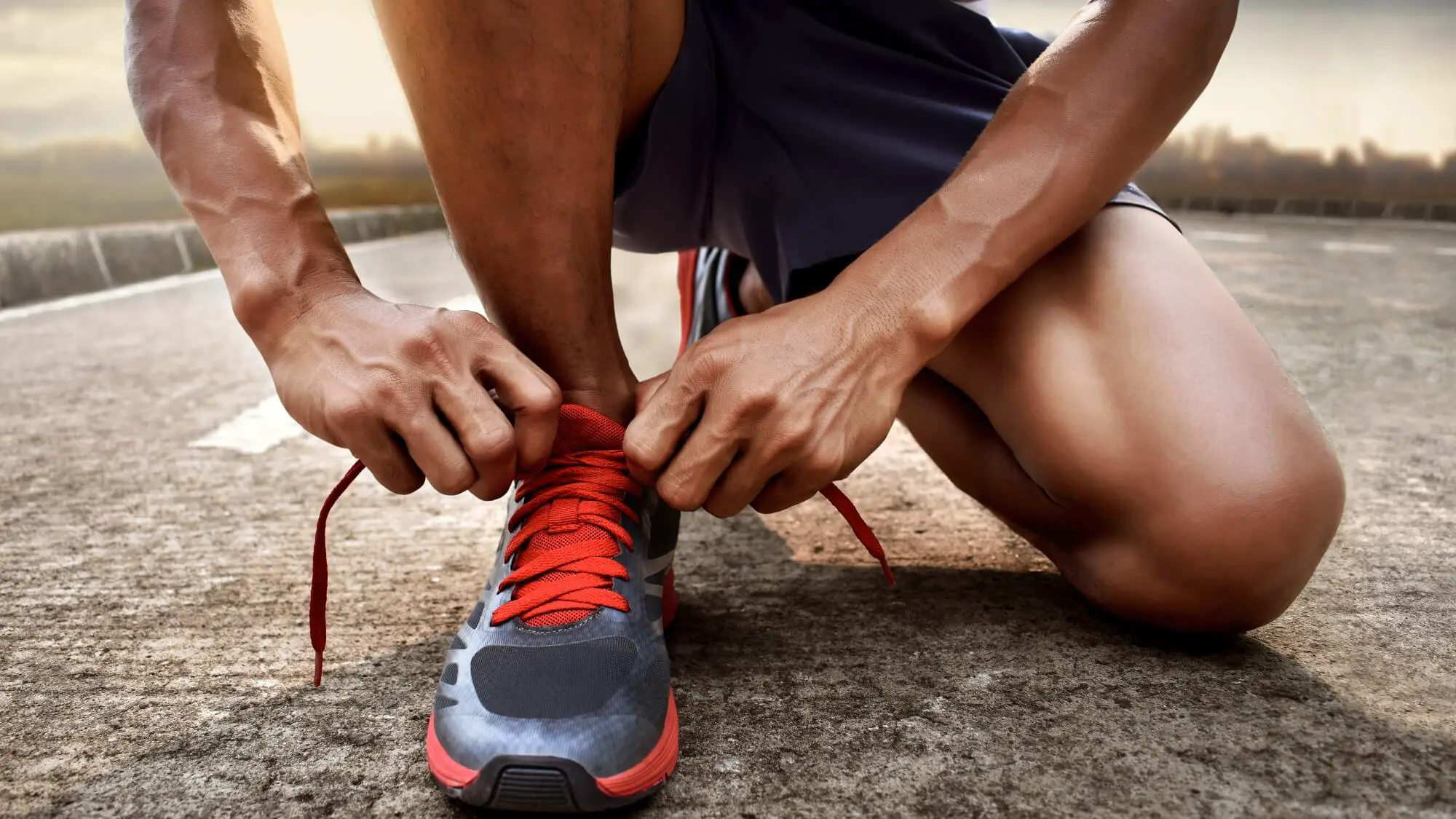
The question remains: what makes a running shoe the “best running shoe”? We get this question quite a bit. It’s not a simple one to answer. Why? It’s completely dependent on your unique structures, what your body tells you, your skill level, your planned terrain, and many more factors. Picking a good pair of running shoes gets personal.
Tips For Selecting The Right Size Running Shoe
Getting the right size for your running shoes is the most critical step to take. It assists in enhancing the overall running experience, as well as avoiding the potential for injury. Let’s get real here, it’s difficult to remain motivated with shoes that don’t properly fit your feet. Digging in, there are some specific factors that play into the proper sizing of a pair of running shoes.
Shoe Length
One of the most basic rules of thumb when determining sizing for running shoes is that your foot is going to need more space compared to other shoe types. Remember, the foot naturally expands over the course of a run. As a result, it is important to leave a bit of extra space (for both width and length), but not too much extra space.So how much is enough? In terms of shoe length, you should be able to fit a single finger worth of space between the tip of the shoe and your big toe. Additionally, if you find yourself running long distances frequently, you may need to go a full size up from what you are used to. Your shoes being too short have a few telltale signs, including lost toenails and bruised toes.
Shoe Width
Every bit as important as shoe length when looking for the perfect fit on a pair of running shoes is the width. There are people with wider feet than others. Conversely, others have narrower than normal feet. You will realize the width of your running shoes aren’t adequate when you experience friction between your shoe and your foot. This is important, as it can lead to the formation of blisters.
Brand of Running Shoes
The size of your running shoes will vary from brand to brand, much like any other piece of clothing. A normal size may be a perfect fit for New Balance. However, this fit may not work the same for Asics. This is why it is crucial to try on your running shoes, and give them a quick test drive before settling on a purchase. Luckily, most online purchases allow for an extensive return policy.It should also be noted that the time of day you decide to try on your new pair of running shoes also matters. Why? Your feet will swell throughout the course of the day. This starts in the morning. As a result, the fit of a shoe at the start of the day might differ from the fit later in the afternoon. This being said, there are two options here. Either try your shoes on later in the day, or try them on when you expect to be running.
Bring Your Gear!
It’s important to bring any special socks, orthotics, or specialized insoles you typically run with when you try on your potential new pair of shoes. Even if you use compression socks, these additions will play a role in the size and fit of your shoe in the long run. Experts recommend using socks specifically made for running, as they provide improvements in both support and comfort.
Discover the Flex Point Of Your Shoe
A significant lack of heel flexibility and support can lead to an array of foot and leg related injuries, such as plantar fasciitis. This is why it’s important to locate the flex point of your shoes.To find this flex point, hold your shoe’s heel and press the tip into the ground. The bend and crease on the upper of the running shoe should be right round the area where your foot flexes when taking a step.
Recognize Signs You Need To Resize Your Shoes
The way your shoes feel on your feet before, after, and during a run is a strong indicator if there needs to be a change in sizing. However, it is in no way the only indicator that should be considered. Here is a list of signs that can signal when you need to think about a resize of your running shoes:
- Tingling and numbness in the toes, which can often signal that shoes may be far too narrow or too short. Ensure you stay wary of narrow shoes, as this is one of the largest factors of foot-related issues.
- Blisters present on the ball of the foot, which can indicate your shoe might be too wide.
- Blisters on top of or between the toes are a surefire indication that your shoes are likely far too small.
- Broken toenails and bruised toes are an indicator that your shoe is also too short, and that you need to be looking for a longer shoe option.
- If you are unable to slide off your shoes without needing to loosen the laces completely, you likely need to increase one half to one full size.
- Heel blisters are strong indicators that the heel cup of your shoes are not wide enough, or that you are not properly lacing your shoes.
- If you experience heel slippage when running uphill, or walking, then it isn’t snug enough. It’s imperative to get a little bit of heel movement when you wear your shoes. However, it isn’t as much that it is uncomfortable or noticeable.
Check The Measurements Of Your Feet Each Time You Get A New Pair Of Shoes
The utmost importance of measuring your feet before you try on running shoes can not be understated. For one thing, people’s feet change as they age. Whether it is due to weight loss or weight gain, pregnancy, surgery, or a whole host of other changes. The size of your feet right now may not be necessarily the size they are in six months to a year.
What Differentiates Training Shoes from Running Shoes
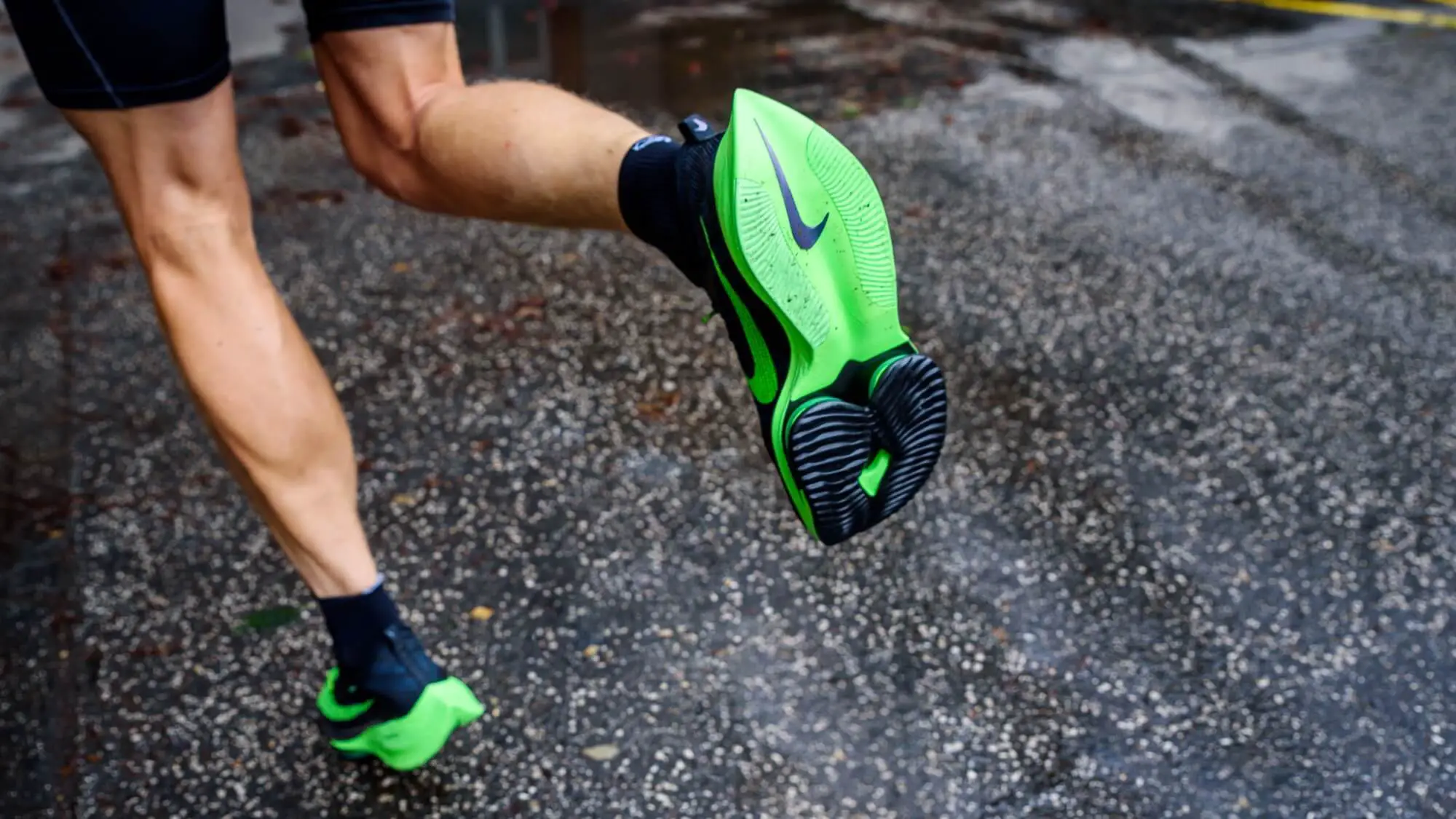
Wondering why your times for your runs tend to falter a bit when you are wearing training or cross-training shoes? (Shameless plug: we have some really comprehensive articles on CrossFit Shoes and Weightlifting Shoes that you should definitely check out!) You aren’t alone. Sometimes, you just want to have one pair of shoes for all exercise. Why not, right? It’s more cost effective, training shoes are comfortable, and they provide okay stability and support. What is the problem?There is absolutely nothing wrong with this way of thinking about things. However, when the chips come down, there are extensive benefits to running-focused shoes compared to using training shoes for running purposes. If you’re looking for the best running shoes for men, then a good start is too look at specifically at running shoes!Yes, training shoes and running shoes will often look very similar. Their features may seem to be just about the same. However, they each serve specific functions on their own. Utilizing them for something completely different (running shoes for weightlifting, training shoes for sprinting) puts you at a strong risk of being injured. Why is this?
Running Shoes Need To Be Used Only For Running
We can’t get any more obvious than this. You should use running shoes for running, and that’s it. But the real question is why do they assist with running? There are multiple answers to this question. There are many features of a shoe that can make it one of the best running shoes for men.
- Running shoes are far more shock absorbent than competing training shoes. This is because they need to endure the consistent, high-impact stress associated with running. Many studies have shown that, when running, your feet hit the surface at over three times your typical body weight. This additional stress can take a toll on your legs and feet without a strong pair of running shoes. The additional cushioning and added sponginess present in running shoes assists with impact absorption.
- If you are looking for a type of shoe that easily accommodates the heel-to-toe movements associated with running strides, running specific shoes are a must. Many come with a far higher heel drop, which assists runners with stability when compared to cross-training shoes.
- In comparison to other types of athletic shoes, running shoes tend to be quite a bit lighter. This makes sense, as an additional ounce per shoe over the course of a marathon equates to a total of 3,000 more pounds moved over the course of a standard marathon. This is why ultralight backpackers slice up their plastic bags to decrease total weight.
- While advantageous for running-based activities, running shoes are typically not equipped to properly handle many of the lateral, side to side movements present in many exercise programs where cross-training shoes shine. Additional support and cushioning provided by running shoes could easily hinder your landing when exercising and jumping. This can lead to knee and ankle injuries.
- Running’s high-impact nature makes it extremely important for running enthusiasts to wear shoes that work for their specific stride and foot shape. There are shoes made for those specific people who overpronate (rolling of the feet inward when running), and for underpronators as well (for example, people afflicted with flat feet). Going for a run in shoes that lack proper foot cradling is a recipe for disaster in the long run.
Training Shoes Can Be Used For Just About Anything Else
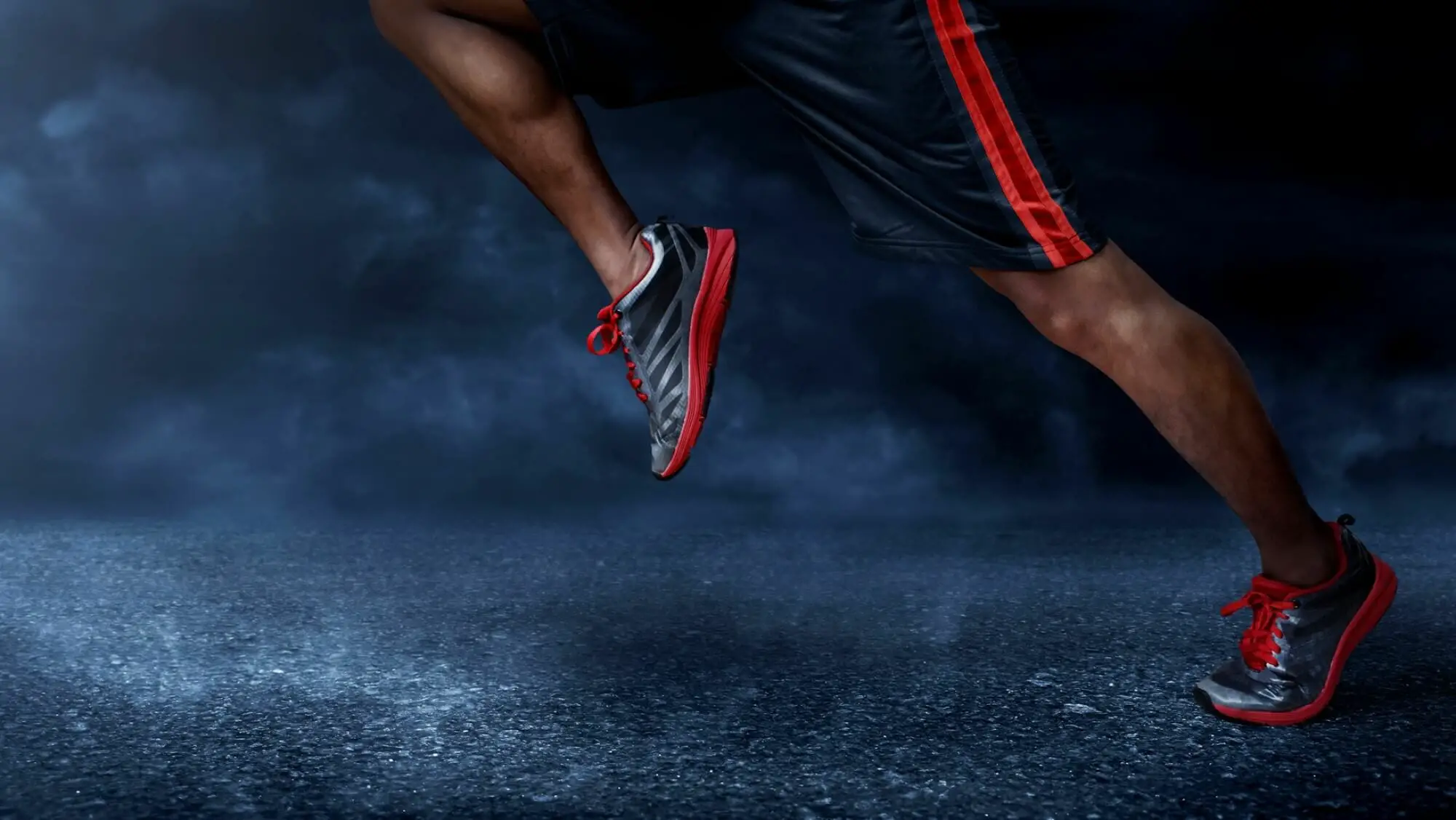
Many high-intensity interval workouts will include a wide variety of activities. From aerobics to plyometrics, strength training to CrossFit and beyond, training shoes can likely handle it all. These types of shoes let you exercise with full range of motion. You can move from side to side, jump, make quick stops, change directions with speed, and more. However, if you try to go for a distance run in cross-training shoes, you are likely to be sore, as well as sorely disappointed.For one thing, the soles of training shoes are flatter compared to related running shoes. Why is this important for training? It enables the shoe to handle an extensive range of motion, while also retaining flexibility. Want a quick and effective method to determine if a shoe is a training or running shoe? Examine the sole’s flatness. Flatter shoes are training shoes, thicker soles are running shoes.Training shoes are a bit more versatile, offering comfort and support for a variety of things, like agility, weightlifting, strength training and more. But not running. These shoes have a far lower heel drop compared to running shoes. This makes it far simpler to push and pivot from your foot. Additionally, the midsoles and uppers provide flexibility for movement in all directions. However, they are not built for handling running’s high-impact, repetitive nature.Why is this? They lack the support and cushioning common in the best running shoes for men. This is required with running shoes, simply because the extensive foot impact of the ground when running is intense.Training shoes have a wider sole, ensuring they have the capability to provide support for sharp turns and lateral movements, not repetitive forward-pushing movements. Additionally, cross-training shoes weigh far more than comparable running shoes. Generally speaking, the lighter the shoe, the better they will be for running.Shoes for training also provide far more cushioning throughout the forefoot. This helps when hitting the ground when more impact compared to the impact experience when running. These training shoes also serve to protect the feet through activities like plyometrics and jumping rope.
The Last Mile on the Best Running Shoes for Men
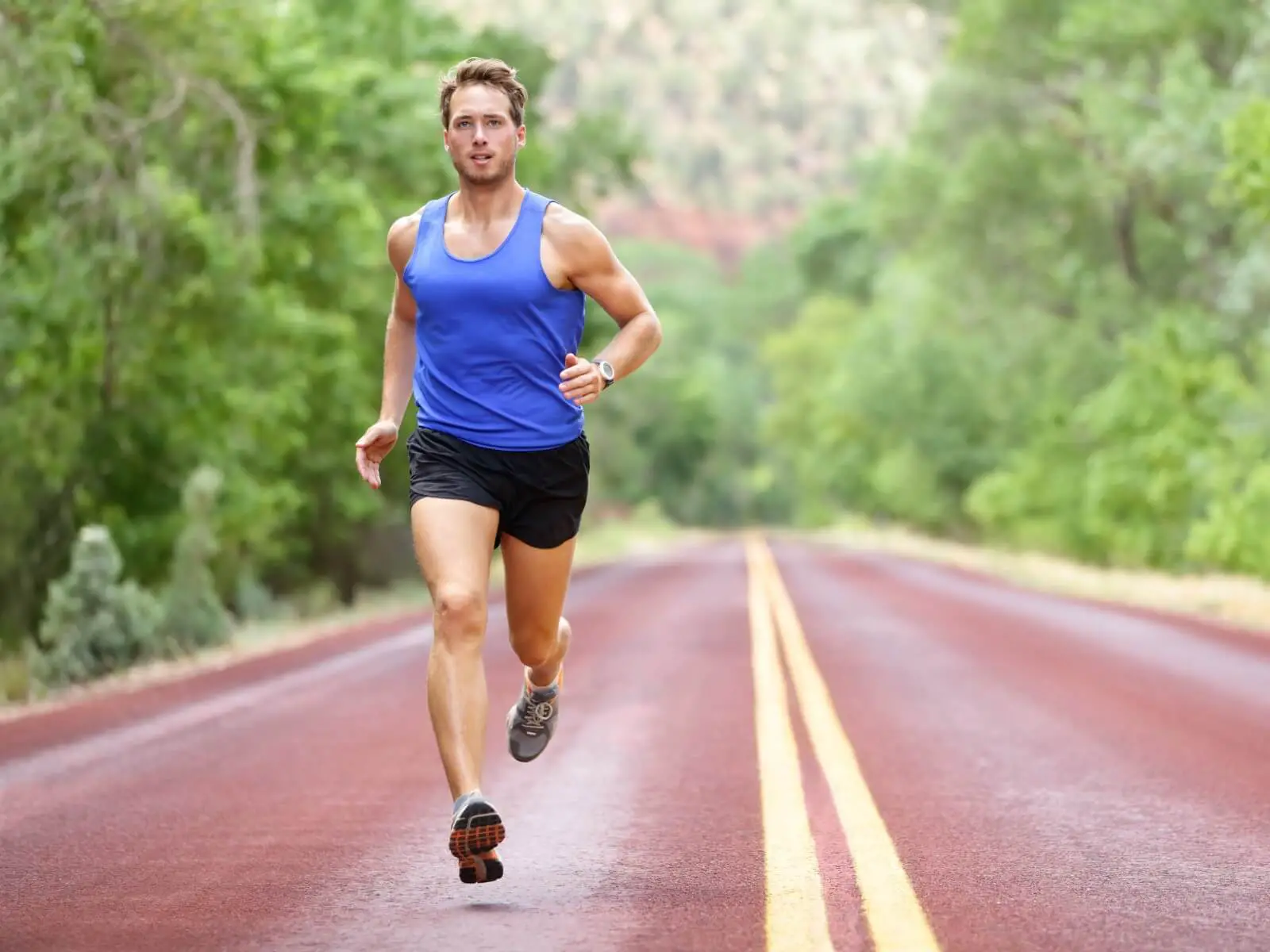
If you are a runner and on the hunt for a great new pair of running shoes, the options available may seem overwhelming. We hope that with our list of the best running shoes for men above, and the recommended buyer’s guide for ensuring you get the perfect shoe, you will be well-equipped to make the right decision.
Whether you are a sprinter, a marathoner, a trail runner, or a casual runner, there is a great option for you. Making sure you do your due diligence will go a long way to ensuring comfort, performance, and breathability.


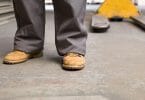
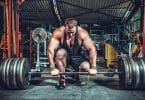


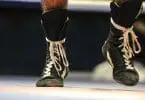

Leave a Comment